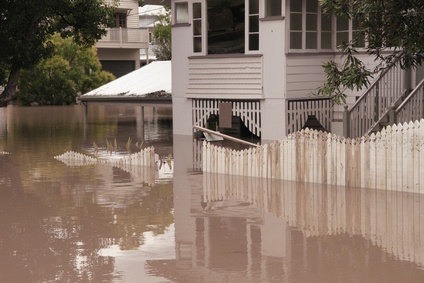Flood Cleanup Checklist and Safety Tips
Water Damage and Flood Cleanup
Hurricane Sandy hit New York and New Jersey hard earlier this week. Many home and properties were extensively damaged or destroyed by floodingFlooding is the overflow or accumulation of water in areas t... More, garbage, mud and sand. The restorationRestoration is the process of returning a property to its pr... More process for some of these properties will have to be cleaned by flood professionals or larger cleaning companies. Yet many properties and homes are stationed father away from the ocean in which they may have not experienced as much wind, rain and floodingFlooding is the overflow or accumulation of water in areas t... More. Little water damage can sometimes be cleaned on your own. Smaller floods will cause less damage and not cost as much if cleaned on your own. Flood cleanups are a stressful time for any property owner. Below are some tips on floodwater cleanup for your home:
- First things first, make sure if any electrical is under water, turn off electricity! Stepping in live water can be extremely dangerous or deadly.
- Once it is safe to enter a flooded area, remove all furniture and personal items to allow them to start dryingDrying is the process of removing moisture from materials, s... More out quicker. Place items outside or in a covered and protected place in the house. Placing fans around furniture will also allow moisture to be removed.
- Water extraction is next. If you have a drain in the basement that doesn’t seem to be draining, fishing the drain can be an option. This also depends on outside water lines and if floodingFlooding is the overflow or accumulation of water in areas t... More is occurring in the streets.
- Check to see if sump pumps are working correctly as well. Like stated before, if grounds and streets are saturated it may be difficult for the sump pumpA sump pump is a pump installed in a basement or crawlspace ... More to remove all water.
- Removing water can be done with a wet vac. This should be used when floodingFlooding is the overflow or accumulation of water in areas t... More is not extensive. If floodingFlooding is the overflow or accumulation of water in areas t... More is feet deep, a professional water extraction service may be needed.
- Once the water is removed, disinfecting the ground and walls should be done. Mud and sewer water, or black water, can cause serious health problems. Bleach solutions and disinfectants should be a good resolution to cleaning the mess.
- Once the water is gone, dryingDrying is the process of removing moisture from materials, s... More is necessary. Large fans and opened windows can air out the space to make sure moisture is dried.
- MoldMold is a type of fungus that grows in damp or humid conditi... More and mildewMildew is a type of fungus that grows on damp surfaces, typi... More will start to grow if moisture is not removed right away. If moldMold is a type of fungus that grows in damp or humid conditi... More starts to grow on walls and moldings, this cleanup job can become costly.
- Don’t place furniture back into the space until floors are completely dried. This will help protect wood floors or carpeting.
- Dehumidifiers will help with the dryingDrying is the process of removing moisture from materials, s... More out process as well as preventing a musty smell that comes from sitting water.
These are only a few steps to take after small floods. Many times you can tackle these messes on your own if floods are smaller. If you experience floods that are larger with extensive debris, a professional water extraction service may be needed.












